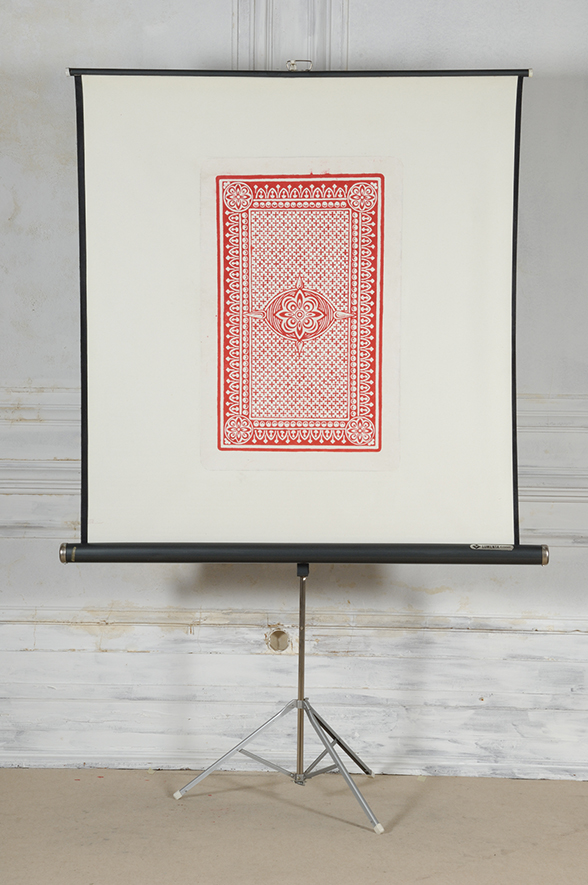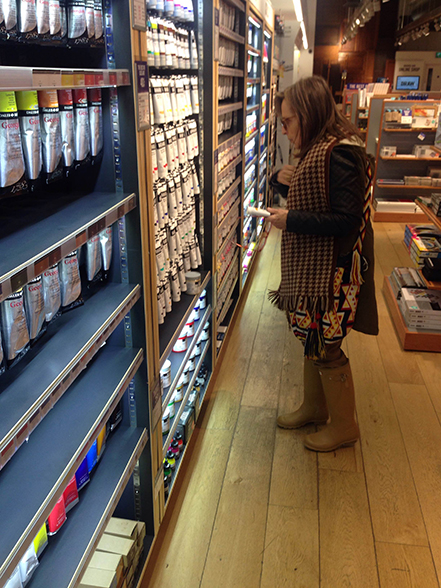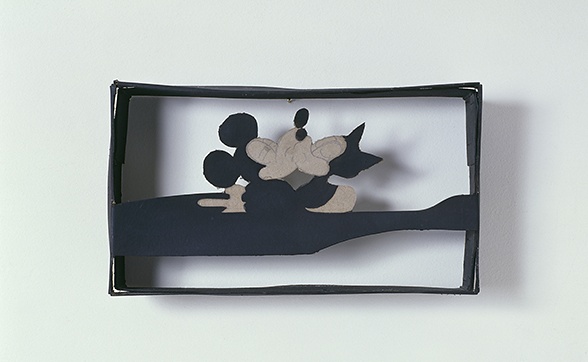Ana Jotta: On Becoming an Artist
Posted on 5 April 2016 by Liverpool Biennial
Ana Jotta, Eduardos. Private collection. Photo: Laura C. Caldas
Rejecting the idea of a recognisable style or the traditional boundaries between art and life, Ana Jotta’s work often embodies a sense of wit, and a love of the unexpected. She draws upon painting and sculpture, as well as embroidery, pottery and crafts, frequently working in series. Ahead of Liverpool Biennial 2016, the Portuguese artist discusses her work, previous career as an actress and stage designer, and her love of screens…
How would you define your practice?
I define myself mostly as a painter and enjoy the challenges of working with a flat, two-dimensional surface. Saying that, I’m also a big collector of objects. They act almost like ‘footnotes’ generating the next work. These objects aren’t archived in an orderly manner and neither am I precious about them; I do throw some away. I see the role of the artist as a transformer of everyday things.
You began working in the late 70’s as an actress and stage designer. How did you make the switch to visual artist?
Rather than a switch, I would describe it more as the continuation of a lifetime of work. I first started as a stage designer and actress with the Produções Teatrais – an amateur theatre group at the Universidade Clássica in Lisbon. I wasn’t a student at the university but I worked for the group because I felt very connected to the thinking and ideas of its director. For him, acting always came first and so the props that I made were often very basic and handmade – all things I like. He died a few years later, so I decided to leave.
I then took a job as a stage designer and worked on two commercial movies. The first was a disaster because I didn’t get on with the director or his approach. He was more interested in special effects than acting. The second movie was a much better experience because I really responded to the metteur en scène (director) – a very interesting man. As they’d already spent half the production budget (which is why they were obliged to call me in the first place), I worked in a very simple way, without moving walls or creating a grand spectacle like you often find in cinema studios. The production was shown as part of the Venice Film Festival in the 80’s. Everyone there thought it was a bizarre but very special film because of the very simple, handmade way in which it had been done, a bit like Rhomer’s film Perceval le Gallois.
I then left commercial cinema because I realised didn’t enjoy being part of such a large team of professionals. It’s marvellous to receive support on my own projects but I much prefer working by myself. I therefore decided to go solo and became a plastic artist; something I was born into.
But you kept your love of cinema...
Yes, but it’s not really about movies. Of course there are many fantastic films which have been made. But what I love is that moment on first entering the darkened cinema room and facing a brilliant blank screen; knowing that it will soon come alive. I adore screens, they have a very particular effect on me. I don’t know why. Even if the movie is awful, I like just to sit there for two or three hours in the dark. I must have seen thousands of movies over the years as a result!

Ana Jotta, 21 Artistes pour Demain, 2007. Private collection. Photo: Laura C. Caldos
People often refer to a theme of erasement within your work, particularly in relation to your short series. Could you explain a bit about this?
I always work in series. I do a couple of works of a particular type and then I don’t want to continue any further so I stop. I have understood how that idea can be explored. This doesn’t ‘erase’ me, I simply get fed up.
People also often mention ‘erasement’ because of the way that I sign my work. I often put my signature just on the back of a piece, as a lot of people do, because otherwise it occupies too much space – even if it’s just a centimetre or two in size. It distresses the overall piece. Similarly, I just put ‘J’ as my signature. It’s just my name.
What excites you most about being part of this year’s Biennial?
I was absolutely astonished when I was invited to participate because I am not a mainstream artist, and neither do I intend to be. There are a few Portuguese artists that are mainstream but I don’t want to be in the spotlight. Anyway, there are many mainstreams; not just one. When you become popular there’s less time for making work; all energies become focused on managing your public relations.
So I was very surprised but also extremely proud. Despite being eccentric – out of the centre – someone has taken notice of my work. Even though I started late in life, I’ve been working as an artist for nearly 40 years!

Ana Jotta visiting Cass Art, Liverpool
Ana Jotta will make new work for Liverpool Biennial 2016 (9 July – 16 October). Find out more about her practice and previous exhibitions here.
She was recently in Liverpool working on her commission for Liverpool Biennial 2016, using materials supplied by Cass Art, the UK's leading art supplies retailer. Cass Art is proud to support Liverpool Biennial. Find their Liverpool shop near the Bluecoat at 18 School Lane, Liverpool L1 3BT.
Interview by Liverpool Biennial Assistant Curator, Sevie Tsampalla
Liverpool Biennial
55 New Bird Street
Liverpool L1 0BW
- T +44 (0)151 709 7444
- info@biennial.com
Liverpool Biennial is funded by
Founding Supporter
James Moores
